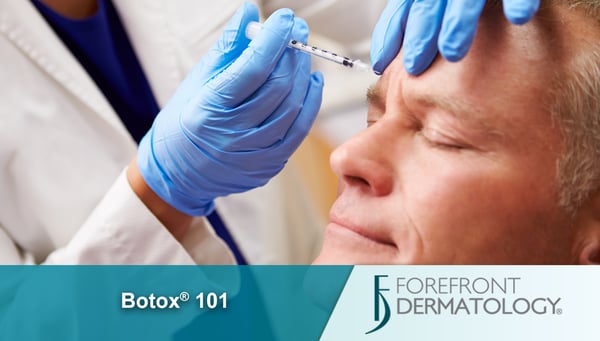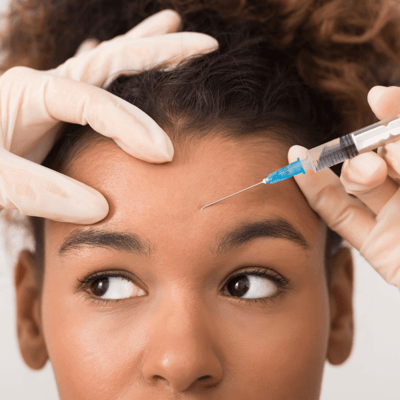
Have you heard someone mention they recently got Botox, but have no clue what it is? You’ve landed at the right spot if you want to learn more:
What is Botox?
Botox is the most popular cosmetic surgery treatment – with over a whopping six million Botox treatments administered every year. Botox is actually the trade name for a substance injected into the skin which is known to inhibit muscle movement – and that can prevent wrinkles from developing or worsening. The name ‘Botox’ actually comes from the word botulous. High levels of this poison have the ability to paralyze – and even kill. However, while it has been described as “the most poisonous substance known”, it all comes down to purity and dose when used safely for cosmetic purposes.
What is Botox used for?
Botulinum toxin injections are noted primarily for the ability to reduce the appearance of some facial wrinkles. They are also used to treat such problems as repetitive neck spasms, excessive sweating, overactive bladder and lazy eye. Botox injections may also help prevent chronic migraines in some people.
Botulinum toxin injections block certain chemical signals from nerves, mostly signals that cause muscles to contract. The most common use of these injections is to temporarily relax the facial muscles that underlie and cause wrinkles, such as:
• Frown lines between the eyebrows
• Crow’s-feet, the lines that fan out from the corners of the eyes
• Forehead furrows
How Does Botox Work?
Botox injections work by blocking the nerve signals, neuro-transmitters, to certain muscles. The muscles then become more relaxed, which in turn reduces the appearance of lines and wrinkles on the skin.
What Happens During a Botox Procedure?
While most people tolerate the injection discomfort well, your doctor might use one or more of various methods available to numb the area, such as topical anesthesia, ice and vibration anesthesia, which uses massage to reduce discomfort. During the procedure your doctor uses a thin needle to inject tiny amounts of botulinum toxin into your skin or muscles. The number of injections needed depends on many factors, including the extent of the area being treated.
Botox injections have no downtime. You can expect to return to normal activities after the procedure. You need to be cautious to not rub or massage the treated areas. This can cause the toxin to migrate to different areas.
What are the risks?
Botox is a relatively safe treatment, but it should always be performed by a qualified medical professional to ensure that you are getting the correct amount in the right area. Visiting someone without the correct qualifications and experience could lead to asymmetrical results, muscle drooping, frozen expressions as well as various other dangerous consequences.
Are there any side-effects to Botox?
If carried out correctly, side effects are generally minimal – and some may not experience any at all. However, occasionally some light bruising or redness around the area of injection might occur, although this shouldn’t last long. Rare side-effects can include difficulty in swallowing, speaking and breathing – if this happens you should seek medical attention immediately.
Botox Results
Once you’ve had Botox injected, the effects on the muscles usually become apparent within a few hours, with the main effects appearing after about a week. Depending on the problem being treated, the effect may last four to six months. To maintain the effect, you’ll need regular follow-up injections.
Skin Struggles?
If you are struggling skin issues and don’t know where to turn, the skin health experts at Forefront Dermatology are ready to help. To find the Forefront dermatologist nearest you, visit the locations page today.





